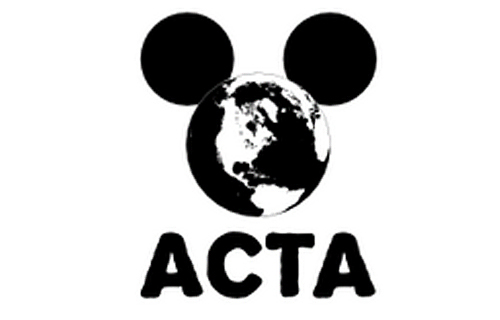THE LAST COUPLE of years have been tough for a lot of us. For me it included the loss of both my parents. Perhaps that is why I am having waves off nostalgia. Last week it was forking out for a trip back to the UK later this year to visit the place of my childhood, and last night it was soaking in a re-run of Notting Hill.
Of course it could simply be that I am losing it. I suspect that I am becoming a certified BOF (Boring Old Fart). People do not tend to tell you that you are now a BOF. It is not just that I notice I have told a particular story before but even worse, listeners develop a glassed look and remember an urgent appointment with the dentist. 
Anyway whatever the reason, it was time to pull out a couple of 20-year-old bits of hi-fi equipment and listen to a Pioneer stable platter mechanism CD player (with in-built legato DAC) and a fifty watt Harmon Kardon. The questions on my mind included:
Did they really sound too bad?
Can I justify the money that I have spent over the last two decades?
Can you take the old gear and with minimum fuss ‘modernise’ the sound?
Horrors, but might I even prefer the sound (or was it just the warm glow of nostalgia)?
This is not intended as a review of the couple of bits of equipment mentioned. However, they were not chosen by accident. A decade ago I was concerned about my son’s lack of direction in life. I sold off the expensive hi-fi system I owned except for the Royd Albion speakers and installed Chris in his first Glenfield do-up home project. The equipment above was my inexpensive ‘fill in’ system while I gradually rebuilt back to my present Naim/Cyrus combination. I was a bit gobsmacked at the time however, by how much joy the ‘fill in’ system gave me, and thought it was worth revisiting.
Okay, for the uninitiated, what does this old gear sound like? The Pioneer has been much respected in its time and has been used as the basis for some later quite flash incarnations. It is a bit warm by today’s standards. Particularly when used through its own internal DAC, it is like adding just the slightest touch of reverb. It does not have the leading edge (bleeding edge?) preferred by a true Naimaholic and certainly not the slam of a Wadia. It is soft, almost analogue-like and very low on fatigue. It did improve slightly with burn-in, careful placement and the upgrading of the mains cable and plug, but the essential signature was still there. I was pleasantly surprised at how well complex material was handled and on simple material the open midrange was a complete joy. The biggest pleasure of all was that it encouraged no critical listening. A friend and I have both used systems of this ilk in a bach setting (crib for those of you on the mainland). Somehow, that well describes its best qualities: dated, relaxed and easy going, not something that you would share with snobby friends but your family can love it. Before you rush out and buy one on Trade Me however, the laser has a limited life and the replacement lasers are distinctly inferior.
The HK amplifier has an equally enthusiastic and energetic approach to music. It has a dry, grainy sound on strings and is far from clean or sweet by today’s standards.Though it is a sound that is not taken seriously by the hi-fi press, one reviewer commenting ‘just what was HK trying to achieve?’ I still find it satisfying in a visceral way. Much of modern recording, particularly in the digital domain, seems to lack warmth and weight and it can sound thin and sterile. Again I was able to clean up the sound a little with replacement gold-plated fuses, a week’s burn-in and replacement mains cables. As the amplifier had no ‘direct’ option some fuzziness was inevitable, however. The HK sounds subjectively loud, the sound fills the house and it is subjectively satisfying.
I know the word is overused and ill defined but the combination of these two pieces of equipment sounds quite ‘musical’. No, I don’t yet know what the word means, but it has something to do with an emotional and visceral response to the music. When combined with the forgiving qualities of Chord Signature cables then music brings a smile to the face, the foot starts tapping and there is a soft feeling in the stomach. Perhaps this is what nostalgia is all about. It is the search for a warmly remembered emotional experience.
To finish my jottings the system is now back to the original Naim server driving my Cyrus gear. I was a little nervous, wondering what it would in fact sound like after a couple of weeks switched off. Even allowing for the cold start it is a more reserved sound than outlined above. The Debbie Harwood recording ‘Soothe Me’ still has some of its shiny gloss, so I am assuming that is in the mix. Her voice emerges naturally forward of the band and is not so large as before but still satisfying. Nat King Cole’s ‘The Very Thought Of You’ now has a more relaxed orchestral sound. Even the wonderfully expressive Anjani has been tamed a little. The Cyrus is after all ‘a singing shoebox’ and I am now conscious that it works hard at times to drive the speakers though technically much more powerful than the H.K. But it is so clean!
I could go on, but the pattern is clear. There is no ‘winner’. If the house was bigger I would have both systems with one in the study or workshop and if there was still a bach then it would be a no brainer. What is good is to put the hundreds of CDs away and to be able to flick through the 100s of sound files on the iPhone. Life doesn’t get much easier than that and for a warmer sound with bags of fidelity there are still the headphones plugged into the computer. Now that could well be the future. JOHN GROOM















